
Diagnostic and Interventional Radiology
Scope & Guideline
Transforming Healthcare with Cutting-edge Radiological Research
Introduction
Aims and Scopes
- Diagnostic Imaging Techniques:
The journal emphasizes the development and application of various imaging modalities, including MRI, CT, ultrasound, and PET, to improve diagnostic accuracy and patient outcomes. - Interventional Radiology Procedures:
A core focus is on innovative interventional techniques, such as embolization, ablation, and catheter-based therapies, aimed at treating a wide range of conditions. - Radiomics and Artificial Intelligence:
The journal explores the integration of radiomics and AI in radiological practice, promoting research on machine learning applications for predictive modeling and diagnostic assistance. - Clinical Applications and Outcomes:
Research articles often provide insights into the clinical efficacy of radiological interventions, including long-term outcomes and patient prognostication. - Educational Aspects:
The journal also addresses the educational needs of radiologists, including training methodologies and the impact of mentorship on professional development.
Trending and Emerging
- Integration of Artificial Intelligence:
There is an increasing focus on the application of AI and machine learning in radiology, particularly in enhancing diagnostic accuracy and workflow efficiency. - Personalized Medicine Approaches:
Research is trending towards personalized imaging techniques that cater to individual patient characteristics, particularly in oncology and chronic diseases. - Interventional Techniques for Complex Cases:
Emerging studies emphasize the use of interventional procedures for more complex clinical scenarios, such as managing complications and advanced disease states. - Telemedicine and Remote Consultations:
The journal is witnessing a rise in articles discussing the role of telemedicine in radiology, particularly in response to the COVID-19 pandemic, highlighting its importance in patient management. - Radiomics and Predictive Analytics:
The use of radiomics for predictive modeling in treatment responses and prognostic outcomes is gaining traction, reflecting a shift towards data-driven decision-making in radiology.
Declining or Waning
- Traditional Imaging Techniques:
There is a noticeable decline in research focused solely on conventional imaging techniques without innovative applications or enhancements, suggesting a shift towards more advanced methodologies. - Generalized Radiology Studies:
Studies that do not incorporate specific clinical applications or advanced imaging technologies have become less common, indicating a preference for targeted and clinically relevant research. - Basic Research on Imaging Physics:
Basic science articles related to imaging physics and methodologies have decreased, as the field moves towards more applied research that directly impacts clinical practice.
Similar Journals

European Journal of Radiology Open
Empowering Radiology Research for a Global AudienceThe European Journal of Radiology Open, published by Elsevier, has established itself as a pivotal platform for disseminating high-quality research in the field of radiology, nuclear medicine, and imaging since its inception in 2014. This open access journal, holding a commendable Q2 ranking in the esteemed 2023 Scopus categorization, seeks to foster a collaborative environment where researchers, professionals, and students can share innovative findings and advancements. Operating under the E-ISSN 2352-0477, this journal contributes to the broader scientific discourse with a commitment to accessibility and transparency, ensuring that cutting-edge research is available to a global audience. The journal's dual focus on rigorous peer review and rapid publication processes underscores its importance within the academic community, aiming to empower professionals with the latest insights in the dynamic landscape of medical imaging.
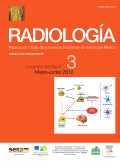
RADIOLOGIA
Connecting professionals with cutting-edge research in radiology.RADIOLOGIA is a distinguished journal in the field of Radiology, Nuclear Medicine, and Imaging, published by Elsevier España. With a rich history since its inception in 1961, this journal serves as a vital resource for professionals, researchers, and students interested in the latest developments and innovations in radiological practices. Although it is currently categorized in the Q3 quartile, its contributions continue to shape and advance clinical practices and research in radiology. RADIOLOGIA provides a platform for scholarly articles, reviews, and case studies that underpin the complexities of imaging techniques and nuclear medicine, while also addressing emerging trends and technologies. The journal is indexed with the ISSN 0033-8338 and E-ISSN 1578-178X, reflecting its accessibility to a global audience dedicated to enhancing patient care through advanced imaging methodologies. Readers can find the journal published in Spain and benefit from its commitment to disseminating pertinent research across diverse aspects of radiology.
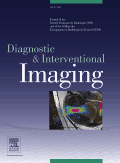
Diagnostic and Interventional Imaging
Shaping the Landscape of Radiological ResearchDiagnostic and Interventional Imaging, published by Elsevier Masson, stands as a prominent journal in the fields of Radiology, Nuclear Medicine, and Imaging. With a significant impact factor and a reputation for high-quality research, this journal is dedicated to advancing the understanding and application of diagnostic and interventional imaging techniques. It has achieved an impressive Q1 ranking across multiple categories including Medicine (miscellaneous) and Radiological and Ultrasound Technology, demonstrating its esteemed position within the academic community. The journal features cutting-edge studies and reviews, reflecting the latest innovations and practices from 2012 to 2024. Researchers, healthcare professionals, and students alike can look forward to accessing valuable insights that drive forward the discipline and improve patient outcomes, as evidenced by its robust Scopus rankings placing it among the top journals in its domain.
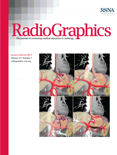
RADIOGRAPHICS
Exploring Innovations in Radiological ExcellenceRADIOGRAPHICS, published by the Radiological Society of North America (RSNA), is a premier academic journal dedicated to the field of radiology, nuclear medicine, and imaging. With an impressive impact factor and recognition in the top quartile (Q1) of both Medicine (miscellaneous) and Radiology, Nuclear Medicine and Imaging categories, RADIOGRAPHICS stands out as a leading platform for disseminating high-quality research and clinical findings. Since its inception in 1985 and projected to run until 2024, the journal has consistently provided essential insights into cutting-edge imaging techniques and advancements in radiological practices, making it invaluable for professionals, researchers, and students alike. Although it does not offer open access, the journal continues to flourish with a robust reputation, ranked 35th in its field according to Scopus, placing it within the 89th percentile of its category. With an unwavering commitment to enhancing the understanding and application of radiological sciences, RADIOGRAPHICS remains a pivotal resource for advancing knowledge and expertise within the medical community.

Japanese Journal of Radiology
Exploring Innovations in Imaging and Nuclear MedicineThe Japanese Journal of Radiology, published by SPRINGER, serves as a premier platform for disseminating cutting-edge research and clinical advancements in the fields of radiology, nuclear medicine, and imaging. With an ISSN of 1867-1071 and E-ISSN 1867-108X, this journal has established itself as a vital resource for practitioners, researchers, and students alike. Renowned for its high-quality peer-reviewed articles, it currently enjoys a respectable impact factor within the Q2 category of Scopus rankings, placing it in the 69th percentile among 333 journals in its field. The journal has seen consistent convergence of research from 2009 to 2024, further underscoring its commitment to advancing the understanding of radiological practices. Importantly, the journal offers Open Access options to facilitate widespread dissemination of knowledge, ensuring that vital research reaches its audience without barriers. Addressed in Japan, the Japanese Journal of Radiology plays a critical role in enhancing the global discourse on medical imaging, making it an essential resource for anyone engaged in this dynamic field.

Radiologie
Connecting Radiological Science to Clinical ExcellenceRadiologie, published by SPRINGER HEIDELBERG, is an emerging journal dedicated to the fields of radiology, nuclear medicine, and imaging. With an ISSN of 2731-7048 and E-ISSN 2731-7056, this journal does not currently offer open access, providing a traditional yet respected platform for scholarly communication. Founded in 2022, it aims to advance the understanding of cutting-edge imaging techniques and their applications in clinical practice, contributing to improvements in diagnostic accuracy and patient care. Despite its recent establishment, Radiologie is positioned within the Q4 quartile category, reflecting its developing presence in the academic landscape, with a current Scopus rank of #231 out of 333 in its category. The journal serves as a vital resource for researchers, professionals, and students seeking to stay abreast of the latest developments in radiological science, imaging technology, and their clinical implications, ensuring ongoing engagement and advancement in this critical area of healthcare.
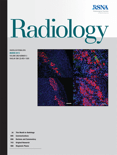
RADIOLOGY
Elevating diagnostic excellence through innovative research.RADIOLOGY, published by the Radiological Society of North America (RSNA), stands as a premier journal in the fields of radiology, nuclear medicine, and imaging. Established in 1945, this esteemed journal has consistently provided groundbreaking research and insights, helping to shape advancements in diagnostic imaging and therapeutic interventions. With a commendable Q1 ranking in its category and a remarkable 99th percentile ranking in Scopus, RADIOLOGY continues to be a pivotal resource for clinicians, researchers, and students alike. Although not an Open Access journal, it offers a wealth of high-quality peer-reviewed articles that contribute significantly to the ongoing discourse in the medical community. With a strong focus on innovative techniques and the integration of new technologies, RADIOLOGY remains essential for professionals aiming to stay at the forefront of medical imaging practices.
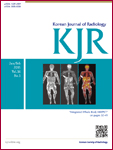
KOREAN JOURNAL OF RADIOLOGY
Advancing Imaging Excellence in RadiologyKorean Journal of Radiology (ISSN: 1229-6929, E-ISSN: 2005-8330), published by the Korean Society of Radiology, stands as a leading international platform for the dissemination of high-quality research and advancements in the fields of radiology, nuclear medicine, and imaging. With a remarkable impact factor and ranked in the Q1 quadrant in its category, this journal showcases cutting-edge studies, clinical investigations, and comprehensive reviews that significantly contribute to the understanding and practice of medical imaging. Researchers, clinicians, and students alike will find the journal an invaluable resource, featuring innovative methodologies, case studies, and essential updates in imaging technology. Since its inception in 2000 and continuing through 2024, the Korean Journal of Radiology remains dedicated to promoting excellence and fostering collaborative research within the global radiology community, underscoring the importance of imaging in modern medicine.

Journal of the Belgian Society of Radiology
Fostering Collaborative Research in RadiologyThe Journal of the Belgian Society of Radiology, published by UBIQUITY PRESS LTD, is a pivotal resource in the field of radiology, nuclear medicine, and imaging. With an ISSN of 2514-8281 and E-ISSN of 2514-8281, this open access journal has been dedicated to fostering the dissemination of high-quality research since its establishment in 2010. Distributed from the United Kingdom, it offers a platform for innovative studies, case reports, and reviews that contribute to the advancement of radiological sciences. Despite its current Q4 category ranking within Scopus, the journal plays a critical role in sharing essential findings with a community of over 1,200 professionals and students eager to stay abreast of emerging trends and technological advancements in imaging. By enabling unrestricted access to its publications, the journal encourages collaborative research and knowledge exchange that transcends geographic boundaries, solidifying its importance for both established researchers and emerging scholars in the discipline.
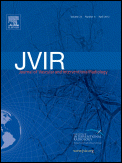
JOURNAL OF VASCULAR AND INTERVENTIONAL RADIOLOGY
Advancing the Frontiers of Vascular InnovationJOURNAL OF VASCULAR AND INTERVENTIONAL RADIOLOGY, published by Elsevier Science Inc, is a leading interdisciplinary journal dedicated to the advancement of vascular and interventional radiology research and practice. With an ISSN of 1051-0443 and an E-ISSN of 1535-7732, this esteemed journal serves as a vital platform for disseminating high-quality research from 1990 to present, showcasing significant contributions in the fields of cardiology, cardiovascular medicine, and radiology. The journal holds a commendable position within its categories, being ranked in the Q2 quartile for 2023 in cardiology and cardiovascular medicine as well as radiology, nuclear medicine, and imaging, indicating its relevance and impact within these domains. A notable aspect of this journal is its commitment to enlightening the medical community with cutting-edge findings and innovative techniques in interventional radiology, which are crucial for improving patient outcomes. Despite not being an open-access journal, it remains widely accessible through institutional subscriptions, ensuring that researchers, healthcare professionals, and students can engage with and contribute to its rich repository of knowledge.